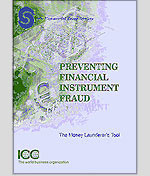
Education Associates, Inc.
A Non-Profit Corporation
|
Quatloos! > Investment Fraud > HYIP & Bank Debentures > HYIP > Mastermind Sentenced Prime Bank Mastermind Sentenced Thursday February 20, 2003 - Page A-24 Regulation & Law Financial Institutions
|
Securities Fraud Stock and Bond Fraud, including Boiler Rooms / Pump and Dump Schemes, Mutual Fund & Hedge Fund Fraud, FOREX scams, plus Churning, Private Placements, Venture and Bridge Funding, IPOs, Viaticals Fraud, HYIP and Prime Bank scams, MTNs, Historical Notes, Recovery Schemes, etc. U.S. Department of Justice Explanation of Prime Bank/ High-Yield Investment Schemes FBI Shuts Down Prime Bank Investment Frauds That Cost Investors $500 Million -- In a stunning series of nationwide raids, the FBI executed over 100 arrest and search warrants on persons involved with "Prime Bank" and "High Yield Investment Programs" and similar programs. From http://www.fbi.gov/ pressrel/ pressrel03/ mueller 030703.htm |
 |
© 2002- by Quatloosia Publishing LLC.. All rights reserved. No portion of this website may be reprinted in whole or in part without the express, written permission of Financial & Tax Fraud Associates, Inc. This site is http://www.quatloos.com. Legal issues should be faxed to (877) 698-0678. Our attorneys are Grobaty & Pitet LLP (http://grobatypitet.com) and Riser Adkisson LLP (http://risad.com).
 |
 |
 |
 |
| www.assetprotectionbook.com | www.farbook.com | www.eiabook.com | Lost Eye Book |
Website designed and maintained by John Barrick




